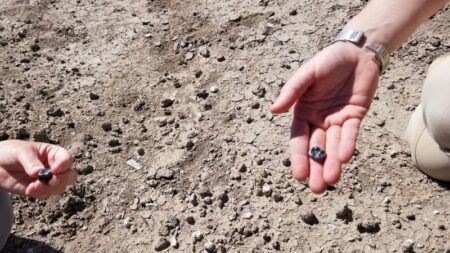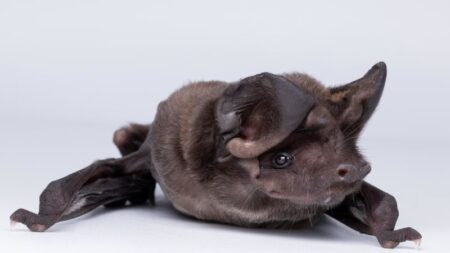For millennia, the plague has been a formidable affliction that has plagued ancient Eurasia, with the most notorious manifestation being the Black Death that swept through Europe in the 14th century. This devastating disease primarily spread through the bites of infected fleas that resided on rats, a mechanism still prevalent in its transmission today. However, the understanding of the plague’s history, particularly during the Bronze Age, has long remained murky as researchers grappled with the absence of evidence linking the bacterium Yersinia pestis to its transmission routes during that period.
A recent breakthrough has emerged from the collaborative efforts of an international research team, which successfully recovered the genome of Yersinia pestis from an unexpected source: a domesticated sheep that roamed modern-day Russia approximately 4,000 years ago. This research marks a significant milestone in understanding how the disease operated in a time before fleas on rats became the primary vectors. The team’s findings, detailed in a study published in the journal Cell, suggest that livestock, including sheep, played a pivotal role in the disease’s transmission in ancient Eurasia, reshaping perspectives on how plagues may have spread over vast distances.
Lead author Ian Light-Maka, associated with the Max Planck Institute for Infection Biology in Berlin, pointed out that understanding Yersinia pestis traditionally relied on bacterial genomes extracted from human remains. This approach limited the scope of knowledge regarding how humans contracted the illness, leaving many questions unanswered. In this instance, the remarkable discovery of the ancient bacterium from a nonhuman host opens a new window into the evolutionary history of the plague and its relationship with modern strains.
The particular lineage of the bacterium responsible for the Bronze Age plague is believed to have circulated from Europe to Mongolia, spanning an impressive distance of about 6,000 kilometers (around 3,700 miles). Researchers suggest that the domestication of animals during that era directly coincided with the emergence of many contemporary human diseases. The study highlights the likelihood that various animal species, not just rodents, contributed to the complex network through which the plague was transmitted during the Bronze Age. The implications of this finding emphasize that a more extensive range of animals could be involved in disease transmission than previously acknowledged.
Archaeological work conducted at Arkaim, a notable settlement of the Sintashta-Petrovka culture renowned for its advancements in livestock management, yielded the necropsy point necessary for the study. In examining animal remains, researchers uncovered the tooth of a 4,000-year-old sheep that exhibited the same plague bacteria found in humans. This discovery has led to the hypothesis that domesticated sheep acted as a conduit between humans and their wild counterparts, facilitating the spread of the bacteria.
Dr. Taylor Hermes, an anthropology assistant professor at the University of Arkansas and coauthor of the study, indicated that this research offers insights into how nomadic herders on the Eurasian Steppe could have created conditions favorable for disease transmission. The presence of the plague was notably pervasive, with estimates suggesting that up to 20% of individuals interred in certain cemeteries during that epoch succumbed to the infection.
The successful isolation of Yersinia pestis DNA from ancient animal remains provides a promising avenue for further research into the evolution of this pathogenic lineage as well as its connections with later outbreaks, including the infamous Black Death in Europe. Evolutionary geneticist Hendrik Poinar noted the significance of this discovery, emphasizing that while it confirms the resilient nature of the plague pathogen, it also stresses the need for continued investigation into ancient strains and their potential implications for contemporary disease dynamics.
Despite the current rarity of plague infections—with estimates of 1,000 to 2,000 cases worldwide each year—the lingering presence of Yersinia pestis across parts of Africa, Asia, and even in regions like the western United States, necessitates ongoing caution. Dr. Hermes reassured that while the study’s findings are intriguing, they also serve as a reminder of the importance of maintaining hygiene when handling livestock and other animals.
The research encapsulates an essential narrative about the interconnectedness of diseases, humans, and animals across history, thereby perpetuating a better understanding of public health across various epochs. It heralds a new frontier of possibilities in tracing the complexities of disease transmission and encourages vigilance as societal practices continue to evolve.












